#natural philosophy
Text

hedge + hog = hedgehog
pork + pine = porcupine
i hypothesize the existence of a third pokevolution of this pointy, grass type pig-like creature. i'm tentatively calling it the hambush. i'll let you know if i ever find one.
783 notes
·
View notes
Text
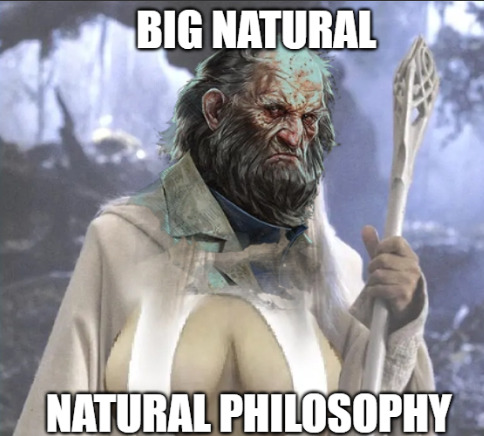
#that's it#apparently you get no context#this is Light's fault#I love it and I hate it at the same time#the demons won#anton sokolov#anton sokolov's big naturals#natural science#natural philosophy#dh#dishonored#shitpost
47 notes
·
View notes
Text
Two ladybugs on two ladies


#gloomcore#grunge#aesthetic#dark naturalism#dark moodboard#etheral#cryptidcore#cryptid academia#twilight aesthetic#natural philosophy#dreamcore#nostalgiacore
56 notes
·
View notes
Text

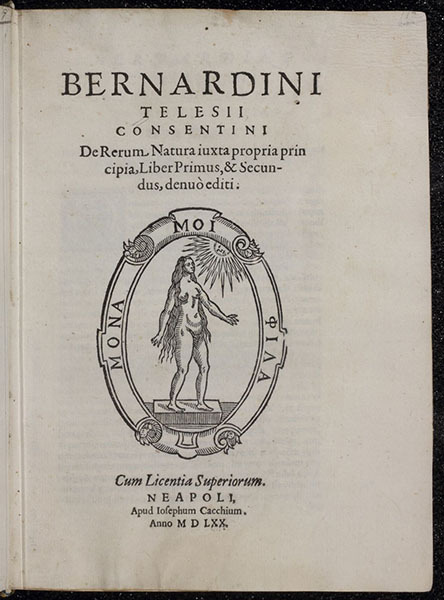

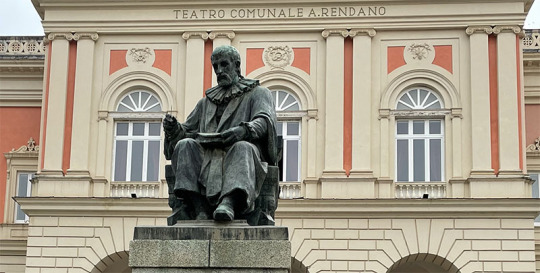
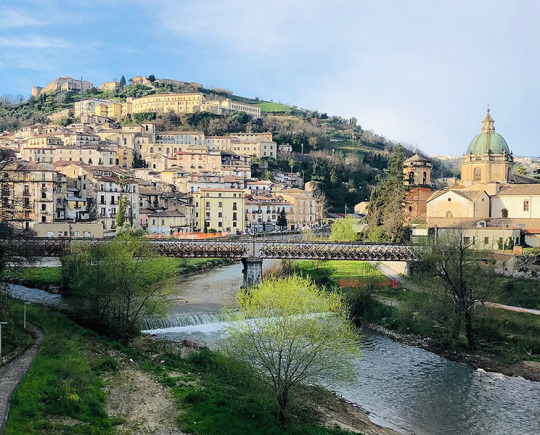
Bernardino Telesio – Scientist of the Day
Bernardino Telesio, an Italian natural philosopher, died Oct. 2, 1588, at the age of 78.
read more...
#Bernardino Telesio#natural philosophy#humanism#histsci#histSTM#16th century#history of science#Ashworth#Scientist of the Day
16 notes
·
View notes
Text
Introduction to 'Figured Stones' by Paul Prudence
All over the world are scattered stones that contain tiny kingdoms of petrified forests and model mountains. These stones, with their imagined societies of people, their animals and mythical creatures, await to do trade and form alliances. In each rock you may find exotic gardens, encrusted cliffs and the wrecks of ruined palaces. And every space is overrun by lichens, vines and exotic herbs. That ‘figured stones’ have been prized for their mimicry of miniature topographies of Lilliputian beauty is well attested by the great collections as far back as the T’ang dynasty. But even before that era of great adoration, these rocks had already weathered their apparitions into the human imagination. The pre T’ang literature tells of strange rocks in wild places that took the form of dragons, saints and even monsters. And the metaphysics of the microcosm found an early apogee in the emperor’s magic monuments made entirely from these stones.
Erosion, whose secrets are occluded only by time itself, has been busy; slowly dissolving rough rock into miniature worlds. The flow of water – that fertile archetype of time itself – has worn tiny rivers and valleys into stone, copying those processes of the greater world. Time flows through water and time flows through rocks, transforming them into mirror-worlds by attrition. And with more time these tiny streams in stone are turned into caves and tunnels which burrow down into the foundations of our own subconscious worlds. These sunless chambers form the perfect refuges for the dreamt-up denizens of our inflamed imaginations.
Nature has summoned its blind forces to create a fractal dimension, for each rock is a replica that exposes all the processes by which the world fully reveals – and comprehends – itself. As diminished echoes of the earth’s own features, figured stones offer us foci for studying a sense of planetary introspection. In depicting the greater essences of its smaller self, nature’s trick becomes a form of self-awareness – nature’s ‘that I am’ is cast into solid conscious form as the geological recollections of a former world are made manifest. The ghosts of stratified histories cascade through time and leave their marks in rock as totems or as scripts, or as tiny worlds, complete.
—Paul Prudence, Figured Stones: Exploring the Lithic Imaginary
#quote#Paul Prudence#Prudence#Figured Stones#stones#geology#nature#natural philosophy#philosophy#vibrant materialism#deep time#time#archeology#archaeology#rocks#rock
24 notes
·
View notes
Text
Umwelt: What Matters Most in the World
(Originally posted at my blog at https://rebeccalexa.com/umwelt-what-matters-most-in-the-world/)
I will be the first to admit that a lot of philosophy tends to bend my brain in ways that I’m really not prepared for. I’m a very earthy creature, and I am more comfortable in physical, solid spaces than in abstract conceptualizations. Even the modalities of psychology I gravitated toward in grad school tended to be based in our interactions with physical nature, and measurable effects thereof. But it was a casual discussion on philosophy with regards to the awareness of animals that introduced me to the concept of umwelt.
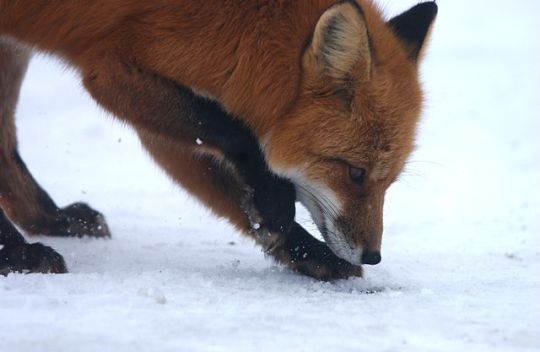
Originally coined by biologist Jakob Johann Freiherr von Uexküll, umwelt describes the unique way in which a given animal experiences the world around it. Uexküll looked at how various beings take in information through their senses; the way that a blind, deaf worm engages with their environment through taste and touch is very different from how we with our hearing and color vision connect with our world. Even when I am walking with my dog out in the woods, her interpretation of what’s going on around us is going to be much more heavily influenced by hearing, and especially smell, than my sight-heavy approach. (And when we engage with each other, our respective umwelten create a semiosphere!)
So umwelt is essentially the sum total of all the ways in which an animal takes in that sensory information and attaches meaning to each fragment thereof. It’s how they tell the story of the world around them, and understand their place in it. And they rank the signs according to importance; umwelt is more strongly formed by things that are of particular interest to the animal.
That means that umwelt, rather than being constant throughout life, is always shifting according to new sensory input, or changes in how the senses work; as my dog gets older, her hearing and vision may not be as good as they were, but if her nose stays sharp then smells may become an even more important part of how she navigates her world.
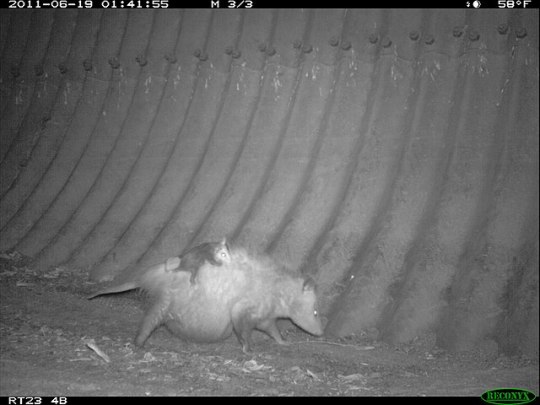
Or look at a Virginia opossum (Didelphis virginiana), which is born as a blind, deaf little hairless being with two front legs that they use to crawl to the mother’s abdominal pouch. At that time their umwelt centers on seeking and retaining the warmth of their mother’s pouch, and the sensation of the constant flow of warm, nourishing milk. After about ten weeks they leave the pouch as a miniature furry little possum and travel on their mother’s back while learning to walk; their umwelt has expanded quite a bit to include the sight and smell of their mother, the visual and scent cues that tell them how close they are to known food sources, and visual, sound, and audio information warning of various dangers. At around five months, the opossum becomes independent, and their mother fades from their umwelt while being replaced by an even larger network of food, danger, and perhaps even potential mates. Over a lifetime, as the opossum’s senses develop (and, with age, decline) and their priorities shift, so does their umwelt evolve with them.
This then led me into a bit of a rabbit hole with biosemiotics. Semiotics is the study of symbols and the communication of meaning, to include communication with the self. Biosemiotics, then, is how non-human beings assign meaning to various things in their lives, and interpret the world they live in. Zoosemiotics specifically refers to the semiotics of animals, like the examples I’ve given so far, while endosemiotics (aka phytosemiotics or vegetative semiotics) is semiotics at a cellular or even molecular level.

One example of endosemiotics can be found in our immune systems. A B lymphocyte can recognize an invader such as a virus or bacteria, and it sends out a signal (an antigen) to T lymphocytes that then attack the invader. The B lymphocyte’s umwelt consists of information received through surface receptors that can detect certain proteins and other molecules, and the response it’s programmed to have as a result of detecting an invader. The T lymphocyte’s umwelt, on the other hand, centers on the B lymphocyte’s antigen signal, as well as the invader itself.
Biosemiotics is important because it moves meaning-making beyond humans, demonstrating that we are not the only beings who assign more importance to one part of our world than another. It promotes the idea that human language is not necessary for an organism to be able to find meaning in their environment. I’m cautious about anthropomorphization–assigning human traits to non-human beings–but biosemiotics allows each being to be its own unique self, rather than being gauged by human standards.
It’s all too easy for me to get overwhelmed by just how technical some of the discussion over biosemiotics can get (especially when delving into the “semotics” part of it!) But my takeaway is that it’s nice to have a term–umwelt–that encapsulates the unique experience that every animal, plant, fungus, slime mold, and other being has, no matter how large or small its world may be.
I can envision millions upon millions of overlapping umwelten in every ecosystem, becoming semiospheres whenever two or more of those umwelten nudge, slide, or crash into each other. I’m already delighted by knowing that I myself contain several ecosystems, with microbiomes in my organs and on my skin and more. But I can now also consider the umwelten and semiospheres of the lymphocytes in my immune system, along with all the other cells that are carrying on their existences within my various tissues, fluids, and so forth.
Of course, this gets into discussions of whether umwelt requires some level of consciousness, the nature of consciousness, sentience vs. sapience, etc., etc., all of which are the sort of headache-inducing philosophical discussions that I try to avoid at this stage of my life. So I can understand that this whole umwelt-biosemiotics thing is still being hammered out and explored and critiqued, but also use it to augment my own personal model of my world, internal and external (my innenwelt!) And for now, umwelt is a perfectly good shorthand for “the unique way in which an organism experiences its environment.”
Did you enjoy this post? Consider taking one of my online foraging and natural history classes, checking out my other articles, or picking up a paperback or ebook I’ve written! You can even buy me a coffee here!
#umwelt#nature#vocabulary#vocab#natural history#natural philosophy#philosophy#psychology#ecopsychology#consciousness#semiotics#biosemiotics#symbols#wildlife#ecology#biology#science#scicomm#science communication#long post
77 notes
·
View notes
Note
I'm looking forward to see your exploration of the Dishonored scientific lore! Roseburrow's an intriguing soul, considering he had his best intentions, had difficult time and lived in poverty and then... he's famous innovator with guilt conscience. I see your Esmond on the edge of the discovery - not yet enough resources and support, but he feels he might soon bring great changes in the society.
Any natural philosopher is remarkable, the developers really made the game's lore worth of interest, Sokolov from the first Dishonored is my absolute favorite. Renaissance man with many talents and complex character.
Perhaps, Dr. Galvani is another interesting scientist. He's as well passionate about his work; marks the day he had a conversation with Sokolov as the greatest day in his entire lifetime; once was Granny Rags' doctor; studied the rat plague, kept a bunch of rats in his house for that case (there was an incident which resulted with a severed arm that can be found near the rat pantry); he can be robbed by the protagonist at least thrice after which he becomes understandably paranoid (I also loved his notes, he seems like an ardent man, maybe choleric). I even find some similarities with Piero. I'm curious what people imagine him look like.
Oh, and you can think of the parallels with scientists from the real world! I'm certain there's a lot.
P.s. I have no idea if I made any spelling mistakes, but I hope my rant is somehow coherent. I wish you luck :)
Hello! First and foremost, I thank you kindly for your interest and your support, it's very much appreciated!! :)
Your message is very interesting, and there's a lot to say about all of these scientists.
Starting with Roseburrow, I think that's an unjustly forgotten character. Probably because we barely hear of him at all in the games, and not everyone has seen the beautiful Tales of Dunwall shorts. But without his breakthrough, who knows what the Empire would have looked like at the time of Corvo and Emily's story? He's a truly pivotal figure and I think it right to pay him tribute somehow. So yes, I wanted to depict him as he was in his younger years; idealistic, full of good intentions and gifted with a true belief in science despite the hardships thrown his way.
Sokolov, too, is a man of many faces! By 1837 and the Rat Plague outbreak, he has completely eclipsed Roseburrow (whose death is still recent!) with his deadly contributions to natural philosophy. On the other hand, he is the Royal Physician and an accomplished artist. Although his methods aren't always the most commendable, he's also a fascinating character.
As for Galvani! That's a good idea. I don't envision him as a genius, and not really as a pivotal scientist in the grand scheme of things, but I agree that his works and his character in general are very interesting too. He's a bit of a shape-shifter as far as I'm concerned: almost menacing in Dishonored, because his apartment anx experiments are honestly very creepy; less so in Dishonored 2, where robbing him is played more as comic relief and there isn't a mission that features him extensively like in the previous game. Representing him would be an interesting challenge, so thank you for the idea!
Researching real scientists and their artistic representations is also a great inspiration, of course! It's pretty clear that Sokolov is heavily inspired by Da Vinci, whereas Jindosh is something of an "evil" rendition of Nikola Tesla. Hypatia, too, is named after a very real Greek philosopher! I'm not sure about the others, but perhaps someone else can provide insight on them.
Forgive me for rambling! I'm very happy to share my thoughts on Dishonored lore and your contribution is very thought-provoking.
Thank you again for your message and have a great day! :)
#ask answered#dishonored#dishonored lore#science illustration#natural philosophy#thank you for your message!#esmond roseburrow#anton sokolov#luigi galvani#alexandria hypatia#kirin jindosh#piero joplin
21 notes
·
View notes
Text

Raise your hoofs for the the and only Ailcorn Princess (or Queen 💞😏)
Twilight Sparkle 🌚✨💖is my Pony Princess and Amy is What are name means Beloved Rose 🌹
I made this blog for Twilight 🌝 , Aesthetics and underrated Subcultures
Goth 🦇🐺🐗🐝🕷🌑
Scene Kid 👽☠️👽🪐🌹🌈
MushroomCore🍄
Natural Philosophy 🍃👑🌿🍁🍀🍂
CuteCore 💖💋💄🐵🐸🙈
Sl8tCore🫦💅🏽🫶🏽👯
Princess core/QueenCore/KingCore/RoyalCores👑👸🏽🤴🏿🫅🤴🏿🫅🏽🤺⚔️🗡️
Furries🦊🐹🦆🦕🦀🐙
AnimeCore🎃🙀👺
NatureCore🐢🐍🍒
Cryptidcore 🎃👹👻
ArtCore🎨🤓(I’m a Furry and And ArtNerd)
#princess twilight sparkle#Stempunk#stempunktwilightsparkle#Goth#Gothic#MushroomCore#SlutCore#Natural Philosophy#CuteCore#PrincessCore#furry#FurryArt#AnimeCore#NatureCore#Cryptidcore#Artcore#Queencore#Kingcore#Knightcore#rangercore#Royalcore#ScenKidz#GenZKids#SteamPunkKinship#PlzJoinUs/Me
7 notes
·
View notes
Text



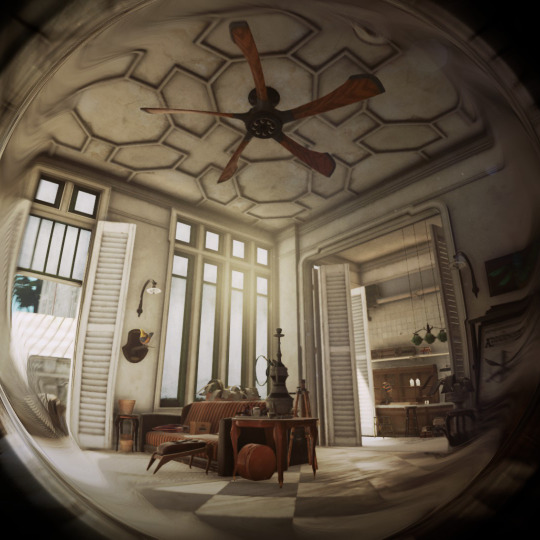

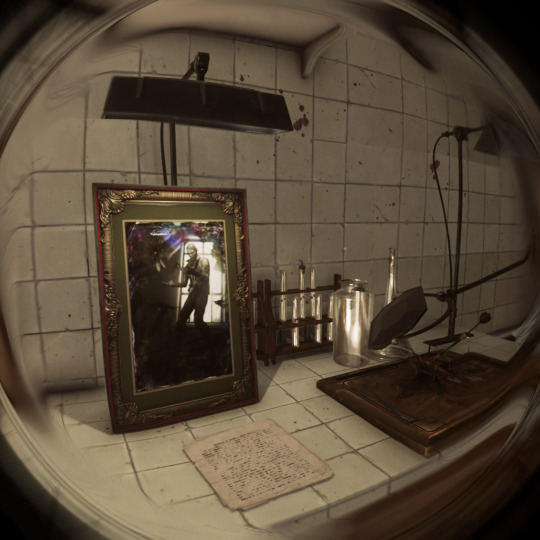
Alexandria Hypatia's apartment
#dishonored 2#1852#month of harvest#4th day#dockyard quarter#alexandria hypatia#hypatia's apartment#bandera passage#interior#architecture#silvergraphy#nest keeper#plaque#serkonan caiman#rhino gonolek#taxidermy#natural philosophy
41 notes
·
View notes
Text

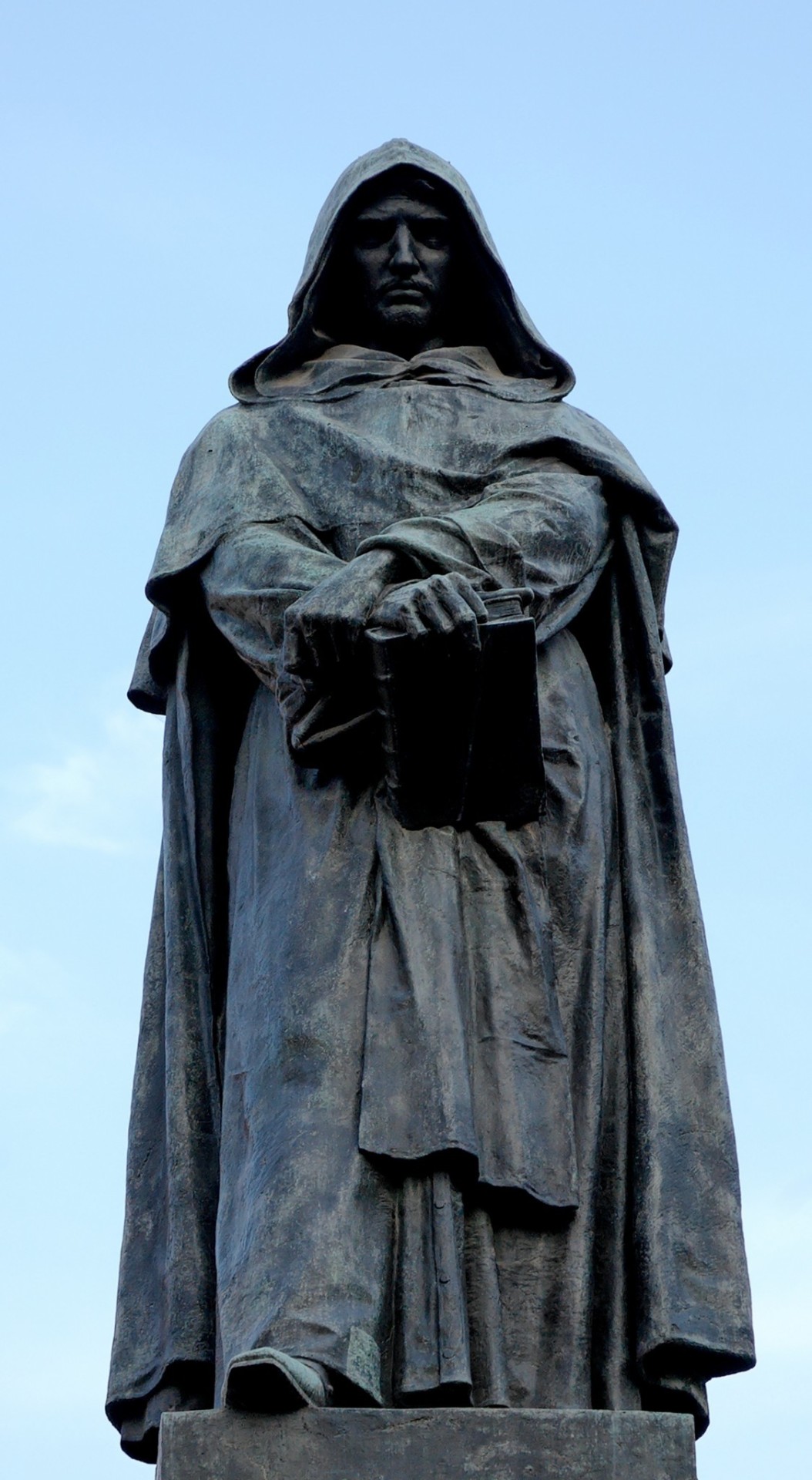
"Innumerable suns exist, innumerable earths revolve about these suns in a manner similar to the way the seven planets revolve around our sun. Living beings inhabit these worlds."
"There is a single general space, a single vast immensity which we may freely call void: in it are unnumerable globes like this on which we live and grow, this space we declare to be infinite, since neither reason, convenience, sense-perception nor nature assign to it a limit."
- Giordano Bruno
(Giordano Bruno Sculpture by Ettore Ferrari | Campo de' Fiori in Rome, Italy)
#giordano bruno#bruno#heretics#heretic#scientist#natural philosophy#western hermeticsm#western occult#western esotericism#western philosophy#westworld#storytelling#philosophy#film#anthony hopkins#the demiruge#demiurge#gnostic memes#sculpture#art
22 notes
·
View notes
Text
“Maths is the subject that still, after all these years, makes me shudder. You say maths and I run screaming out of the room. I mean, the ability of this subject to stress the ever-loving hell out of me really cannot be exaggerated. But, there was a woman out there for whom Maths was a gift and to whom she was a blessing. Emilie du Châtelet was a gift to mathematics and natural philosophy in the 18th century.”
Read the rest here: https://open.substack.com/pub/ananyajagoorie/p/mathematician-philosopher-gambler?r=7dcr2&utm_campaign=post&utm_medium=web
#Emilie du chatelet#history#history facts#women in history#mathematics#natural philosophy#voltaire#she translated newton#conducted experiments to explain kinetic energy#she gambled without inhibitions#she was pretty fucking awesome#who knew#the more you know#women in science
3 notes
·
View notes
Text



Nihilism in the graveyard
#dark academia#chaos academia#dark acadamia aesthetic#grey academia#foggy aesthetic#academia aesthetic#academia#dark academism#green academia#graveyard#dark naturalism#dark moodboard#darkcore#dark green#greycore#grey moodboard#after hours#adventurecore#post soviet#natural philosophy#dark paradise#ethernal#gloomcore#hauntology#cryptid academia#halloween#horror#post apocalyptic#midwest gothic#october
105 notes
·
View notes
Photo
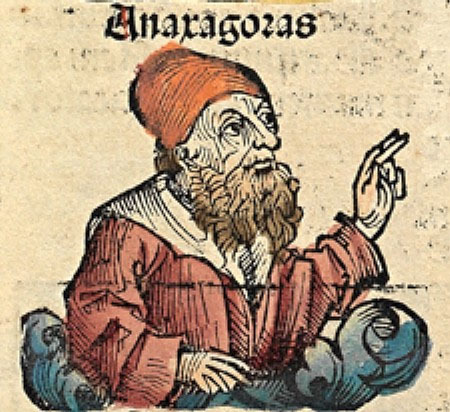

Anaxagoras of Clazomenae – Scientist of the Day
Anaxagoras of Clazomenae, a Presocratic natural philosopher, lived from about 510 BCE to around 430 BCE, so he was philosophizing about 40 years earlier than Socrates and 80 years before Plato.
read more...
#Anaxagoras#presocratics#natural philosophy#ancient Greece#pluralists#histsci#histSTM#5th century BCE#history of science#Ashworth#Scientist of the Day
21 notes
·
View notes
Text
My skull is a maraca filled with little ritual modules. And their itchy with the trickle of sunshine.
The quick starts small, is one of the little truths to live by.
#a companion to garden planning#heliophilioIAO#occult jokes no one asked for#celebrating early spring#imbolc#writing ritual#occult#93#natural philosophy#i want masonry but for gardening and farming hmm...
2 notes
·
View notes
Text

@daily-crabbys inspired me, have this purple crab from the tide pools this afternoon
6 notes
·
View notes
